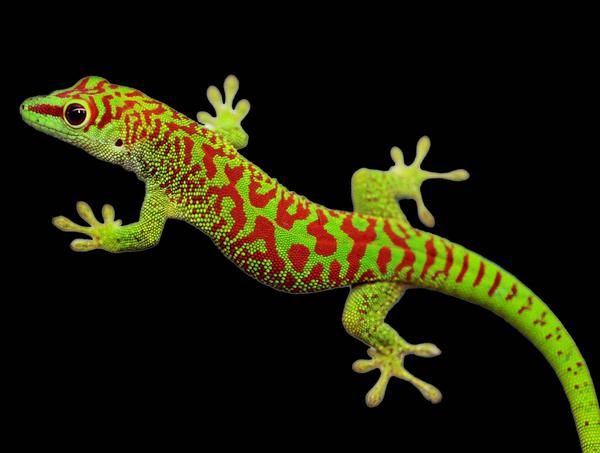- news
- 10-10-2013

Combining Physics and Biology techniques (histology, optics, mass spectrometry, UV/Raman spectroscopy, mathematical modeling), the multidisciplinary team of Prof. Milinkovitch and Prof. van der Marel shows that the extensive variation of skin color and patterns in Phelsuma lizards is generated by precise co-localization of interacting pigmentary and nano-structural elements.
More specifically, the researchers show that:
- the vivid blue and/or green color of dorso-lateral skin is modulated both by variation in the geometry of highly-ordered intracellular nano-crystals (generating a very specific and very intense color) and by the presence of yellow pigments;
- the reflectivity of the white belly and of dorso-lateral pigmentary red marks is increased by underlying disorganized nano-crystals forming broadband reflectors.
These interactions require precise co-localization of yellow and red chromatophores with different types of iridophores, characterized by ordered and disordered nanocrystals, respectively.
The multidisciplinary team of researchers validate these results through numerical simulations combining pigmentary components with a multilayer interferential optical model.
Finally, they show that melanophores form dark lateral patterns but do not significantly contribute to variation in blue/green or red coloration, and that changes in the pH- or redox-state of pigments provide yet an additional source of color variation in lizards.
This study opens up new perspectives for Phelsuma lizards as models in Evolutionary Developmental Biology (Evo-Devo) and Physics of Biology.
More infos is available in the United-Living-Colors of Phelsuma Lizards page and in the original article.
